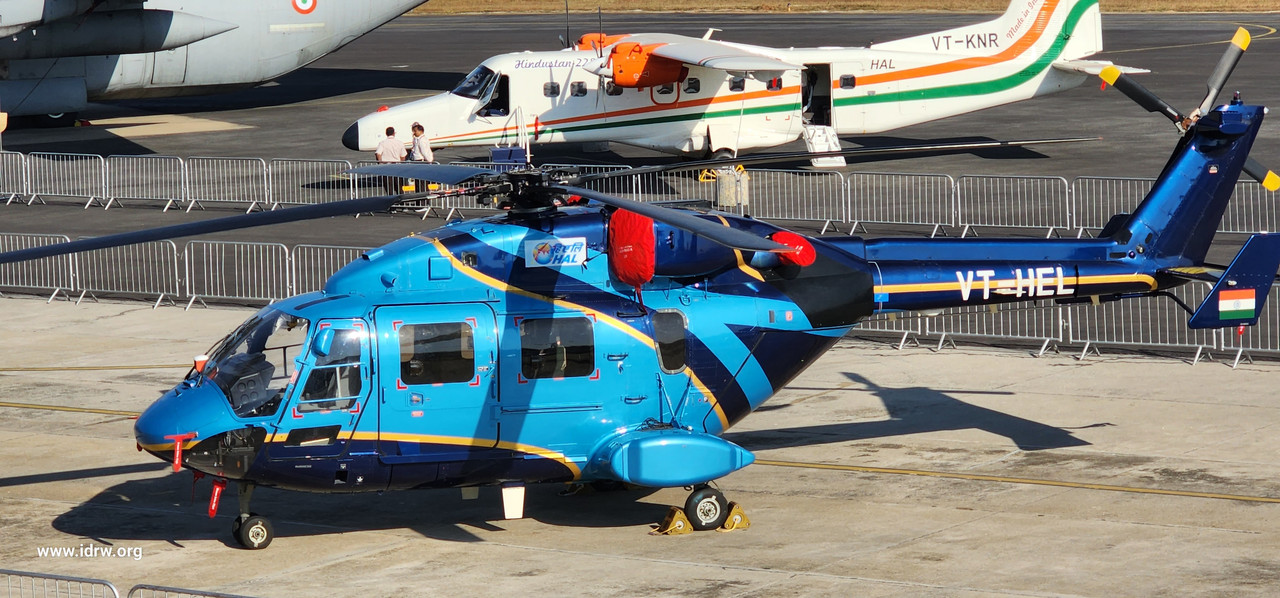SOURCE: IDRW.ORG


The Comptroller and Auditor General of India (CAG) has sharply criticized Hindustan Aeronautics Limited (HAL) for significant delays in securing European Aviation Safety Agency (EASA) certification for its Advanced Light Helicopter (ALH) Dhruv, specifically the civilian variant referred to as Helicopter 1 in the report.
The prolonged certification process, which spanned over a decade, resulted in impaired costs of ?108.24 crore and severely hampered HAL’s export potential, undermining its credibility in the international aviation market. The CAG’s findings, detailed in a recent report, highlight systemic issues in HAL’s approach to international civil aviation certification and call for urgent reforms to prevent similar setbacks in future projects.
HAL initially anticipated that its extensive experience with military certification—conducted through India’s Centre for Military Airworthiness and Certification (CEMILAC)—would streamline the EASA approval process. However, this assumption proved overly optimistic. The CAG report reveals that HAL’s lack of prior engagement with international civil aviation regulators led to significant challenges, including prolonged testing and documentation delays. Unlike military certification, which focuses on operational requirements specific to defense forces, civil aviation certification under EASA demands adherence to stringent safety, environmental, and operational standards, often requiring extensive redesigns and additional testing.
The certification process for Helicopter 1, which began in the early 2000s, was expected to be completed within a few years. However, it dragged on for over a decade, with EASA certification finally achieved in 2014. This delay not only resulted in financial losses—amounting to ?108.24 crore in impaired costs due to extended testing, redesigns, and compliance activities—but also prevented HAL from marketing and exporting the Dhruv to international civilian customers in a timely manner. The prolonged timeline eroded HAL’s competitive edge in the global market, where demand for light utility helicopters is dominated by established players like Airbus Helicopters, Bell, and Leonardo.
The report notes that the extended certification timeline “significantly affected” HAL’s export potential, as potential customers were reluctant to commit to an uncertified platform. The delay also reduced HAL’s credibility in the international aviation industry, where adherence to regulatory timelines and standards is a key indicator of reliability. The CAG emphasized that the stringent regulatory landscape of civil aviation demands a proactive approach to compliance, a lesson HAL failed to internalize during the Dhruv certification process.
The CAG report identifies several root causes for the delays, chief among them HAL’s lack of prior engagement with international civil aviation regulators. Unlike military certification, which HAL had mastered through its experience with CEMILAC, EASA certification required a deep understanding of civil aviation standards, including airworthiness, noise levels, and environmental impact. HAL’s assumption that its military certification experience would suffice proved to be a miscalculation, as the two processes differ significantly in scope and rigor.
Additionally, the report highlights HAL’s failure to integrate international certification requirements from the earliest stages of the Dhruv’s design. This oversight led to multiple iterations of testing and redesign, as HAL struggled to meet EASA’s stringent requirements. Documentation delays further compounded the issue, as HAL was unprepared for the level of detailed record-keeping and validation demanded by EASA. The lack of a dedicated team to coordinate compliance activities exacerbated these challenges, resulting in a fragmented and inefficient certification process.
Recognizing the systemic issues exposed by the ALH-Dhruv certification saga, the CAG has put forth several recommendations to ensure that HAL is better prepared for future international certification efforts. The committee strongly emphasized the need for HAL to integrate international certification requirements from the earliest stages of aircraft and helicopter design. By aligning design and development processes with global standards from the outset, HAL can avoid costly redesigns and expedite the certification timeline.
To facilitate this, the CAG recommends that HAL establish a dedicated Civil Certification Task Force. This task force would be responsible for coordinating all compliance-related activities, liaising with international regulators, and ensuring that documentation and testing are completed efficiently. Such a team would streamline HAL’s certification efforts, reducing the risk of delays and enhancing its ability to compete in the global market.
The CAG also urged the Ministry of Defence (MoD) to play a more active role in supporting HAL’s international certification efforts. Specifically, the committee recommended that the MoD strengthen bilateral agreements with key international certification bodies, including EASA, to fast-track approval processes for future aircraft and helicopter projects. Such agreements could include mutual recognition of certification standards, joint testing programs, and technical cooperation, all of which would reduce the time and cost associated with obtaining approvals from foreign regulators.
NOTE : Article cannot be reproduced without written permission of idrw.org in any form even for YouTube Videos to avoid Copy right strikes. Websites doing illegal reproductions will get DMCA and Legal Notices.